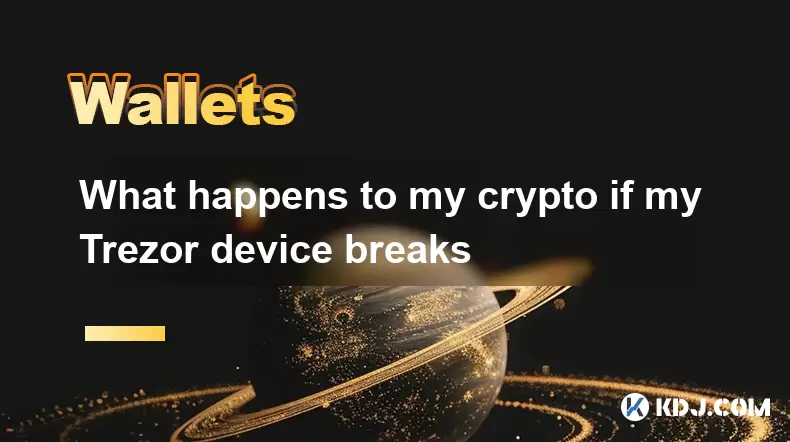-
 Bitcoin
Bitcoin $119,448.2396
0.27% -
 Ethereum
Ethereum $2,992.9919
0.78% -
 XRP
XRP $2.9074
1.58% -
 Tether USDt
Tether USDt $1.0001
0.00% -
 BNB
BNB $687.9097
-0.40% -
 Solana
Solana $161.5804
-0.47% -
 USDC
USDC $0.9998
0.01% -
 Dogecoin
Dogecoin $0.1948
-2.10% -
 TRON
TRON $0.3013
-0.08% -
 Cardano
Cardano $0.7286
-3.16% -
 Hyperliquid
Hyperliquid $47.3153
-3.81% -
 Stellar
Stellar $0.4543
-9.79% -
 Sui
Sui $3.8809
5.63% -
 Chainlink
Chainlink $15.6262
-0.55% -
 Hedera
Hedera $0.2368
-5.31% -
 Bitcoin Cash
Bitcoin Cash $501.2030
-0.80% -
 Avalanche
Avalanche $21.0650
-1.43% -
 UNUS SED LEO
UNUS SED LEO $9.0006
-0.39% -
 Shiba Inu
Shiba Inu $0.0...01310
-1.90% -
 Toncoin
Toncoin $3.0040
1.56% -
 Litecoin
Litecoin $93.8936
-1.20% -
 Monero
Monero $341.8918
1.27% -
 Polkadot
Polkadot $3.9087
-3.05% -
 Uniswap
Uniswap $8.9599
4.78% -
 Dai
Dai $0.9999
0.02% -
 Ethena USDe
Ethena USDe $1.0005
-0.02% -
 Bitget Token
Bitget Token $4.3954
-0.14% -
 Pepe
Pepe $0.0...01207
-2.26% -
 Aave
Aave $314.5223
1.72% -
 Bittensor
Bittensor $408.6988
2.76%
Does MetaMask support Bitcoin?
MetaMask doesn't natively support Bitcoin but allows indirect use via Wrapped Bitcoin (WBTC) or cross-chain bridges.
Jul 15, 2025 at 06:43 am

Understanding MetaMask and Its Core Functionality
MetaMask is a popular cryptocurrency wallet primarily known for its support of Ethereum and Ethereum-based tokens such as ERC-20 and ERC-721. It functions as both a browser extension and a mobile application, allowing users to interact with decentralized applications (dApps) on the Ethereum blockchain seamlessly. The wallet's integration with web3 technologies makes it a go-to choice for many in the Ethereum ecosystem.
However, when it comes to Bitcoin, the most well-known and widely adopted cryptocurrency, MetaMask does not natively support this digital asset. This limitation stems from the fact that MetaMask was built specifically for Ethereum-compatible blockchains, which use different protocols and smart contract languages compared to Bitcoin's blockchain.
Why MetaMask Doesn’t Support Bitcoin Directly
The technical architecture of MetaMask is designed around Ethereum Virtual Machine (EVM) compatibility. Bitcoin operates on a completely separate network with a distinct consensus mechanism, scripting language, and transaction structure. As a result, MetaMask cannot directly interact with the Bitcoin blockchain.
This lack of native support means users cannot store, send, or receive Bitcoin directly through MetaMask. Unlike Ethereum-based assets, which can be easily imported or added to the wallet via token addresses, Bitcoin lacks the necessary smart contract infrastructure to function within the EVM environment.
Workarounds to Use Bitcoin with MetaMask
Although MetaMask doesn't offer direct Bitcoin integration, there are several methods users employ to interact with Bitcoin using their MetaMask wallet indirectly:
- Wrapped Bitcoin (WBTC): WBTC is an ERC-20 token that represents Bitcoin on the Ethereum blockchain. Each WBTC is backed 1:1 by actual Bitcoin held in reserve. Users can acquire WBTC through supported platforms and add it to their MetaMask wallet.
- Cross-chain bridges: Some decentralized finance (DeFi) platforms offer cross-chain bridges that allow users to lock up Bitcoin and receive a tokenized version on Ethereum, which can then be used within MetaMask.
- Third-party integrations: Certain wallets and services like Rabby, Frame, or Trust Wallet integrate with MetaMask and provide broader multi-chain support, including Bitcoin.
These workarounds enable MetaMask users to participate in DeFi protocols using Bitcoin-backed assets, though they come with additional considerations such as trust in custodians and potential security risks.
How to Add Wrapped Bitcoin (WBTC) to MetaMask
Adding WBTC to your MetaMask wallet is a straightforward process:
- Open your MetaMask wallet and click on the "Assets" tab.
- Select "Import Tokens".
- In the "Token Contract Address" field, paste the official WBTC contract address:
0x2260FAC5E5542a6d480A02C33cf1BCCfD41b2d9c. - Click "Next", and MetaMask will automatically populate the token symbol and decimals.
- Confirm by clicking "Add Token".
After completing these steps, WBTC should appear in your MetaMask balance, assuming you've already transferred it to your wallet address. You can now use WBTC in various DeFi applications compatible with Ethereum.
Security Considerations When Using WBTC or Bridges
While using WBTC or cross-chain bridges expands functionality, it also introduces certain security concerns:
- Centralization risk: WBTC relies on custodians to hold the underlying Bitcoin, making it a partially centralized asset.
- Smart contract vulnerabilities: Interacting with third-party bridges exposes users to potential exploits in bridge contracts.
- Liquidity issues: Some bridges may suffer from low liquidity, making it difficult to move large amounts of Bitcoin into Ethereum quickly.
Users must conduct thorough research before engaging with any tokenized asset or bridge service. Always verify contract addresses and ensure you're interacting with reputable platforms like RenVM, WBTC DAO, or cBridge.
Frequently Asked Questions
Q: Can I transfer Bitcoin directly to my MetaMask wallet?
No, you cannot send Bitcoin directly to a MetaMask wallet. Doing so will result in a permanent loss of funds since MetaMask does not recognize Bitcoin transactions. Only Ethereum and ERC-compatible tokens should be sent to a MetaMask address.
Q: Is Wrapped Bitcoin (WBTC) safe to use?
WBTC is generally considered safe if obtained from trusted custodians and platforms. However, it's important to understand that WBTC depends on centralized entities to back the tokens with real Bitcoin, introducing counterparty risk.
Q: Are there alternative wallets that support both Ethereum and Bitcoin natively?
Yes, wallets like Trust Wallet, Litecoin Core, Electrum, and BlueWallet support both Bitcoin and Ethereum. These wallets often don’t have the same dApp integration as MetaMask but offer more comprehensive asset support.
Q: Can I use MetaMask with hardware wallets that support Bitcoin?
MetaMask can connect to hardware wallets such as Ledger or Trezor, which do support Bitcoin. However, even with this connection, MetaMask itself still cannot manage Bitcoin transactions—it only supports Ethereum and compatible chains through hardware wallet integration.
Disclaimer:info@kdj.com
The information provided is not trading advice. kdj.com does not assume any responsibility for any investments made based on the information provided in this article. Cryptocurrencies are highly volatile and it is highly recommended that you invest with caution after thorough research!
If you believe that the content used on this website infringes your copyright, please contact us immediately (info@kdj.com) and we will delete it promptly.
- Bitcoin's Wild Ride: Rally, Record Highs, and the Inevitable Profit Taking
- 2025-07-15 15:10:11
- Bitcoin Rally Cools: Profit-Taking or Just Catching Its Breath?
- 2025-07-15 15:10:11
- PENGU Takes Flight on Hyperliquid: A Pudgy Penguins Tale
- 2025-07-15 14:30:12
- Pendle's DeFi Evolution: From Fixed Income to Institutional Infrastructure
- 2025-07-15 14:30:12
- Navigating Gold Prices: Smart Buying Tips from Your Local Coin Shops
- 2025-07-15 14:50:11
- BDAG X1 App Skyrockets, SHIB Rebounds, and XMR Holds Strong: What's Happening?
- 2025-07-15 07:10:12
Related knowledge

What is a hardware wallet's secure element
Jul 11,2025 at 10:14pm
What is a Hardware Wallet's Secure Element?A hardware wallet is one of the most secure ways to store cryptocurrencies. Unlike software wallets, which ...

What is the difference between a custodial and non-custodial wallet
Jul 13,2025 at 03:21am
Understanding Wallet Types in CryptocurrencyIn the world of cryptocurrency, digital wallets play a crucial role in managing and securing assets. A wal...

How to add a new network to MetaMask
Jul 11,2025 at 11:42pm
Understanding the Need to Add a New NetworkWhen using MetaMask, a popular Ethereum-based cryptocurrency wallet, users often need to interact with diff...

How to add Ethereum L2 networks like Arbitrum to Trezor
Jul 11,2025 at 12:36am
What Is Ethereum L2 and Why Add It to Trezor?Ethereum Layer 2 (L2) networks, such as Arbitrum, are scaling solutions designed to reduce congestion on ...

What happens to my crypto if my Trezor device breaks
Jul 11,2025 at 01:49pm
Understanding Hardware Wallet FailureWhen you store cryptocurrency in a Trezor hardware wallet, the private keys are kept offline, offering a high lev...

How to find a specific receiving address on my Trezor
Jul 09,2025 at 10:36pm
Understanding the Purpose of a Receiving AddressA receiving address is a unique identifier used in blockchain networks to receive cryptocurrency. Each...

What is a hardware wallet's secure element
Jul 11,2025 at 10:14pm
What is a Hardware Wallet's Secure Element?A hardware wallet is one of the most secure ways to store cryptocurrencies. Unlike software wallets, which ...

What is the difference between a custodial and non-custodial wallet
Jul 13,2025 at 03:21am
Understanding Wallet Types in CryptocurrencyIn the world of cryptocurrency, digital wallets play a crucial role in managing and securing assets. A wal...

How to add a new network to MetaMask
Jul 11,2025 at 11:42pm
Understanding the Need to Add a New NetworkWhen using MetaMask, a popular Ethereum-based cryptocurrency wallet, users often need to interact with diff...

How to add Ethereum L2 networks like Arbitrum to Trezor
Jul 11,2025 at 12:36am
What Is Ethereum L2 and Why Add It to Trezor?Ethereum Layer 2 (L2) networks, such as Arbitrum, are scaling solutions designed to reduce congestion on ...

What happens to my crypto if my Trezor device breaks
Jul 11,2025 at 01:49pm
Understanding Hardware Wallet FailureWhen you store cryptocurrency in a Trezor hardware wallet, the private keys are kept offline, offering a high lev...

How to find a specific receiving address on my Trezor
Jul 09,2025 at 10:36pm
Understanding the Purpose of a Receiving AddressA receiving address is a unique identifier used in blockchain networks to receive cryptocurrency. Each...
See all articles

























































































